False start for "Start": what was the fate of the most beautiful Soviet minibus
Categories: Auto | Design and Architecture
By Pictolic https://pictolic.com/article/false-start-for-start-what-was-the-fate-of-the-most-beautiful-soviet-minibus.htmlThe plastic minibus "Start" is not known to every motorist. Although many people have probably seen him in the movies. This unique device has appeared in several films at once, and the most famous of them is "The Caucasian Captive, or the New Adventures of Shurik".
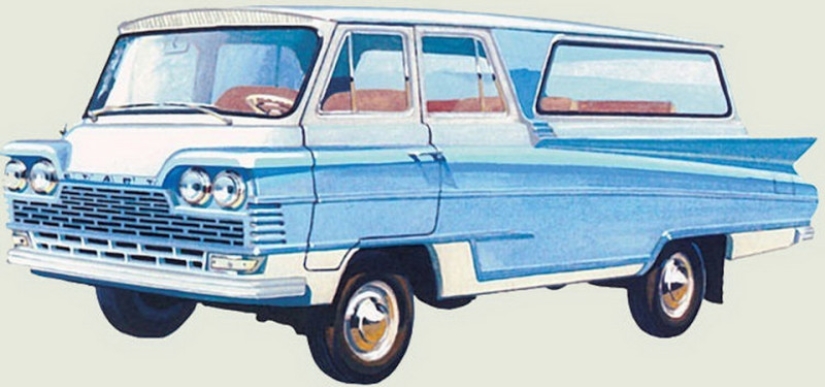
"Start" is a creation of the Ukrainian automobile industry, it was created at the Severodonetsk auto repair base, and the futuristic car was assembled at assembly plants in Luhansk and Donetsk. Unfortunately, it has remained an expensive toy that was not put into mass production.
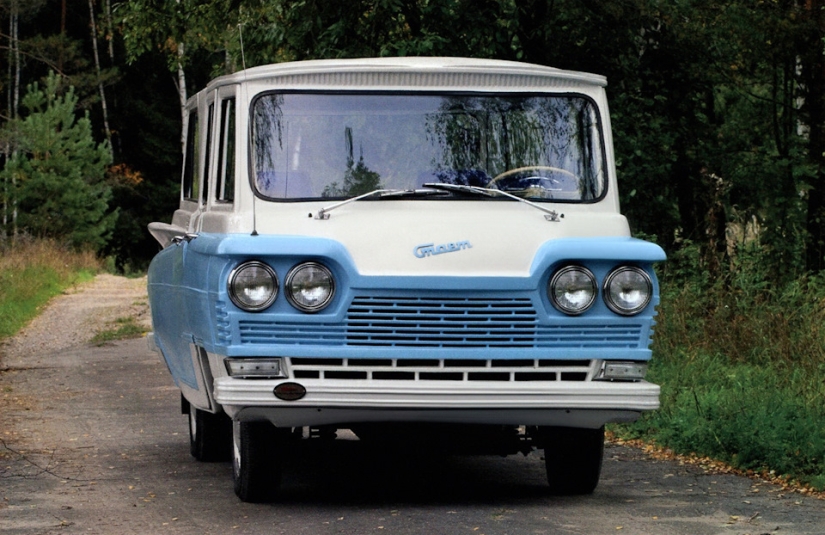
Very few people have seen the minibus "Start ""live"
This car is unique in its own way. The only truly avant-garde car in the 60s with a plastic body, a comfortable interior and units from the" twenty-first " Volga.
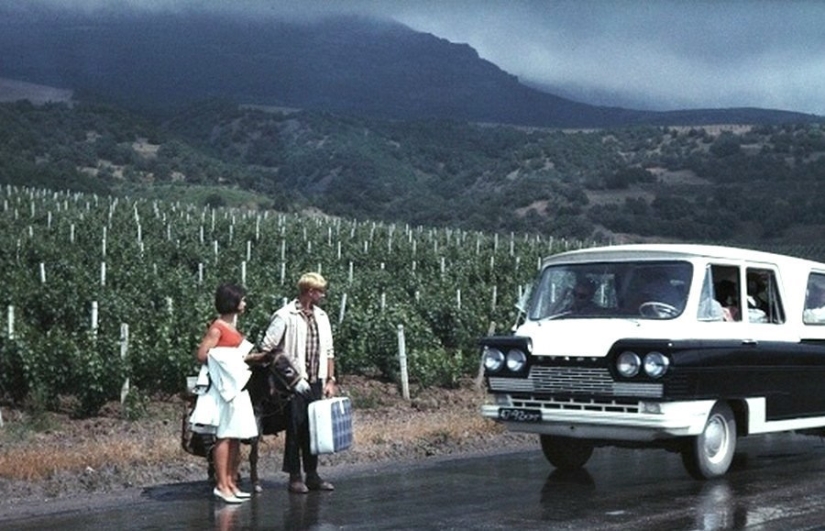
In the finale of "The Caucasian Captive", the heroine of Natalia Varley leaves in a futuristic-looking minibus. This is the very "Start"
"Start" was developed and manufactured in 1963 by the forces of the Severodonetsk automobile Repair base and the Severodonetsk production association "Fiberglass" using components from GAZ-21. The shell-type body, which was installed on the frame chassis, had a working fiberglass skin, which was glued inside a special six-detachable matrix in one technological step manually, by contact molding, after which wooden amplifiers of the sidewalls, roofs, window openings and doors were glued into it.
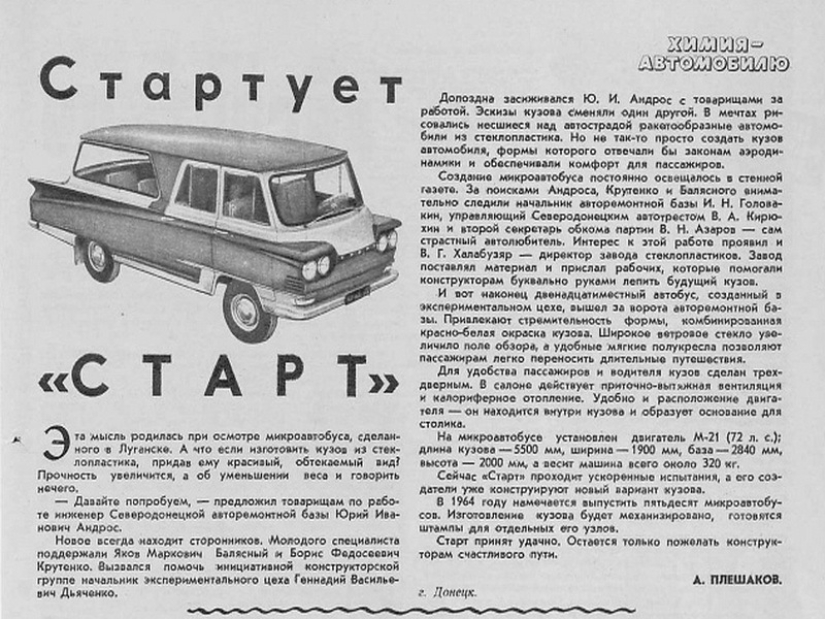
A modest note about the "Start" in the Soviet press
With a 2840-millimeter wheelbase, the Start had a 5535-millimeter length and a 1980-millimeter width. The mass of the ten-seat minibus was only 1342 kilograms, while the five-seat Volga, on the basis of which it was created, weighed 1460 kg (there is a typo in the note above). The 75-horsepower Volga engine provided the "Start" with a 110-kilometer speed.
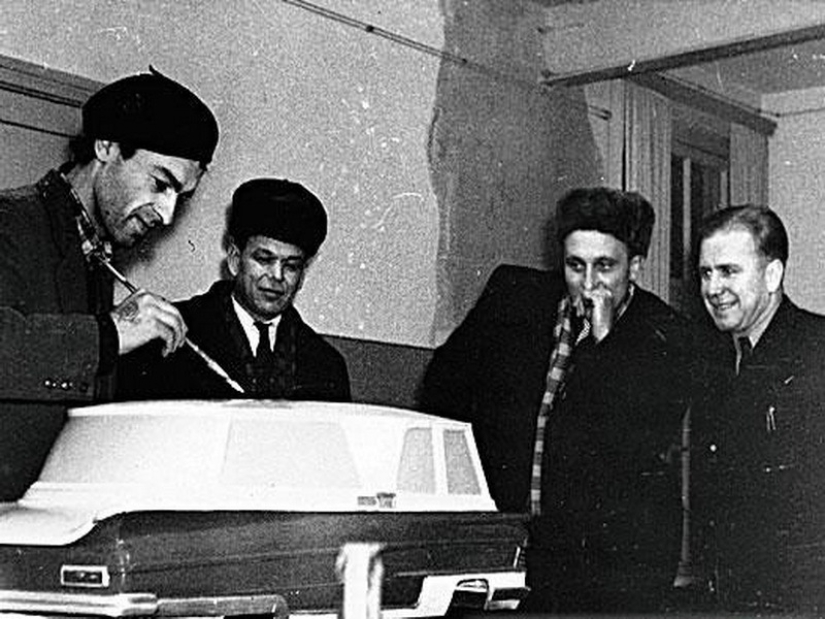
Yuri Andros (far left) at work on a large-scale (1:10) model of the "Start". Thank you, maestro, for a beautiful car!
The design of the body was carried out by the designer Yuri Andros. First, he made a mock-up of one-tenth of the natural size. The car at that time looked catchy, elegant,"Western-style". To create the technology of body gluing, students of the Kharkiv Automobile Institute who had dealt with the HADI sports car were invited.
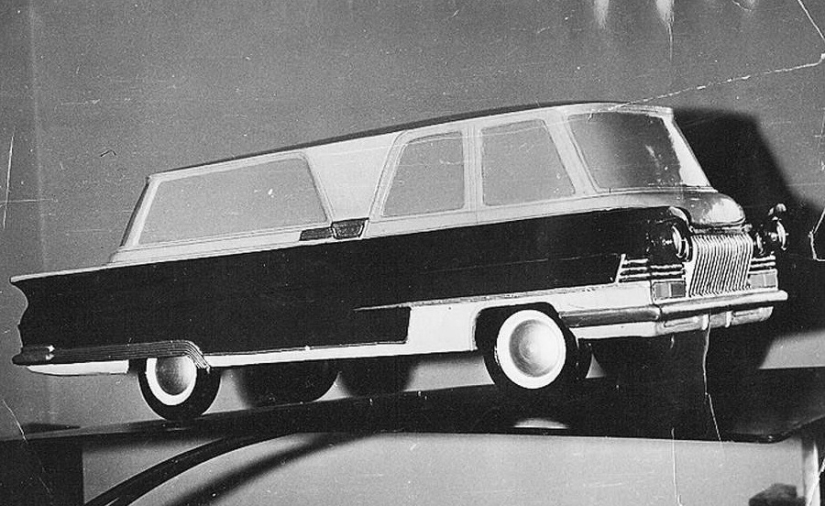
And here is a scale model. The design of the radiator grille is slightly different from the serial version
The appearance of the "Start" was made in the fin style typical of American cars of the 50s. The front lighting was four-phase. Moreover, one of the headlights from each pair gave both low and high beam, and the other — only far and turned on at the moment of switching to long-range lighting.
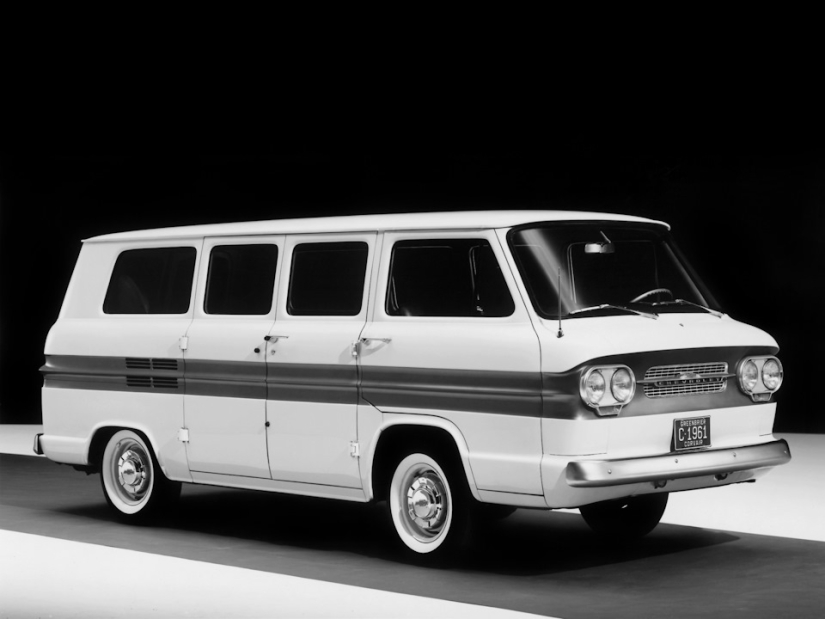
For comparison, here is the Corvair Greenbrier…
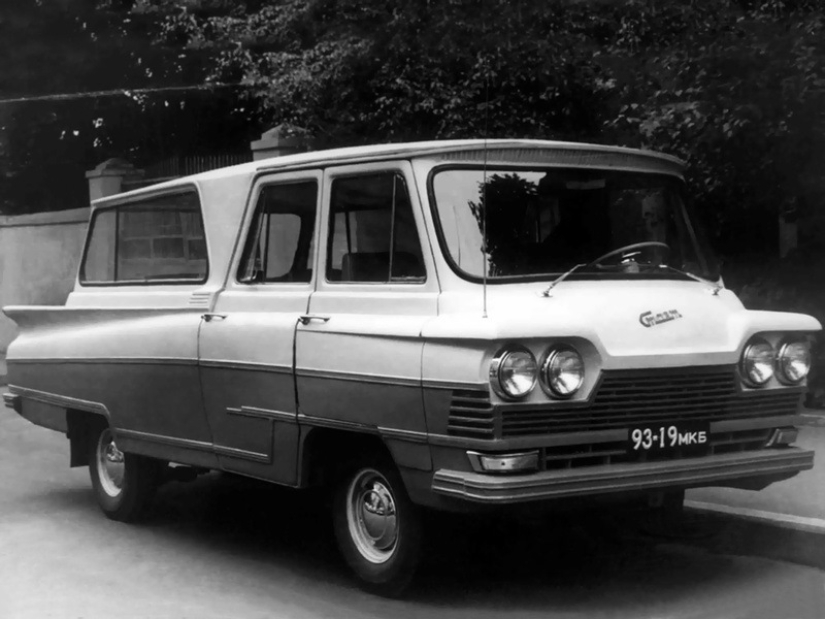
...and here is the "Start". There is something in common, but "Start" is cooler
The choice of plastic as the main body material was not accidental. Firstly, there were a large number of enterprises engaged in the production of epoxy resins in the region, secondly, there was a government program in the country at that time to search for alternative materials, and thirdly, there was simply nowhere to wait for their own stamps for the production of metal parts.
To create a plastic body, a reference plaster model was originally created. Then a counterform was created directly on it, inside which the bus bodies were glued out of epoxy resin.
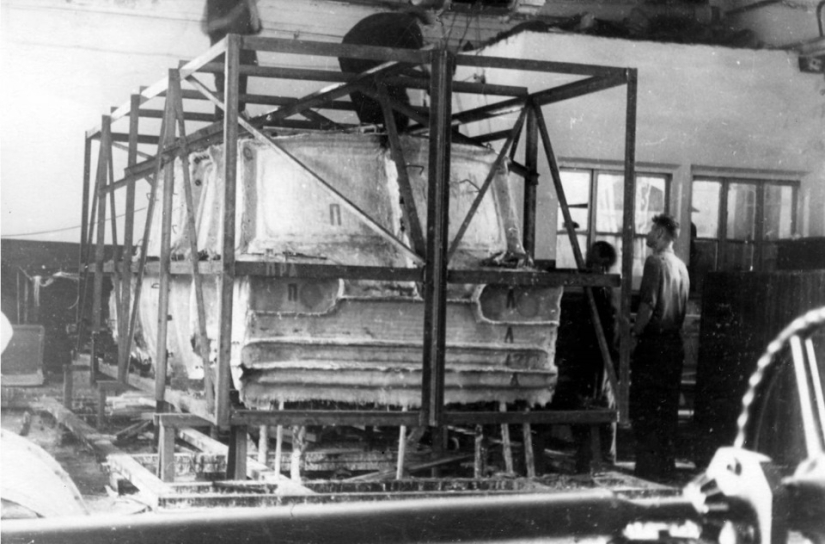
The process of creating a counterform, or matrix for body panels, was very time-consuming and expensive
The mechanical filling for the car was taken from the 21st "Volga". The power architecture is based on a welded frame, designed in such a way as to "reconcile" the unchanged Volga chassis with the original wagon-type body. The displacement of the engine allowed the use of a shortened driveshaft without an intermediate support. Thus, the engine was in the cabin. And the" hump " of the engine compartment was adapted for a table. The lights, interior elements, front lights, a bird on the trunk were taken from the Volga .
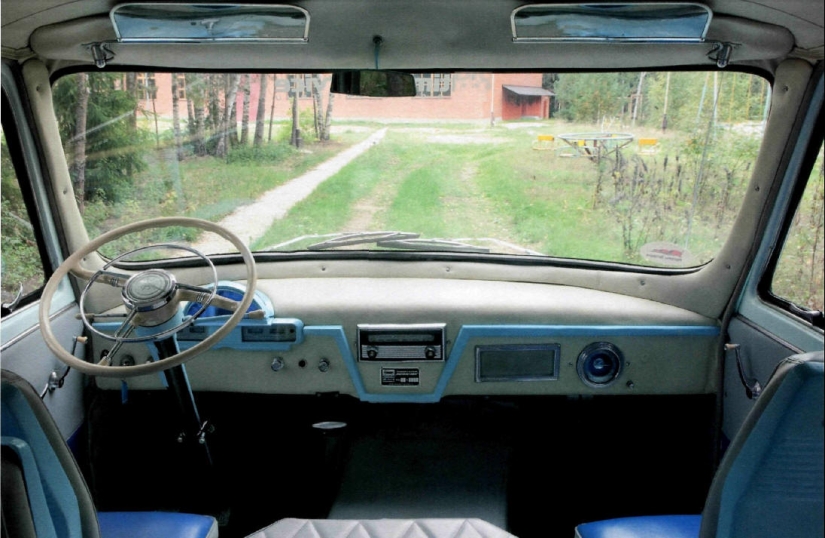
The"Start" salon
Despite the lack of a testing base and large financial resources, the car was brought to mind and even brought to Moscow, where it became a real media character. The car was shown in the issue of the Vremya program, mentioned in Pravda, exhibited in one of the VDNH pavilions and even demonstrated to Khrushchev.
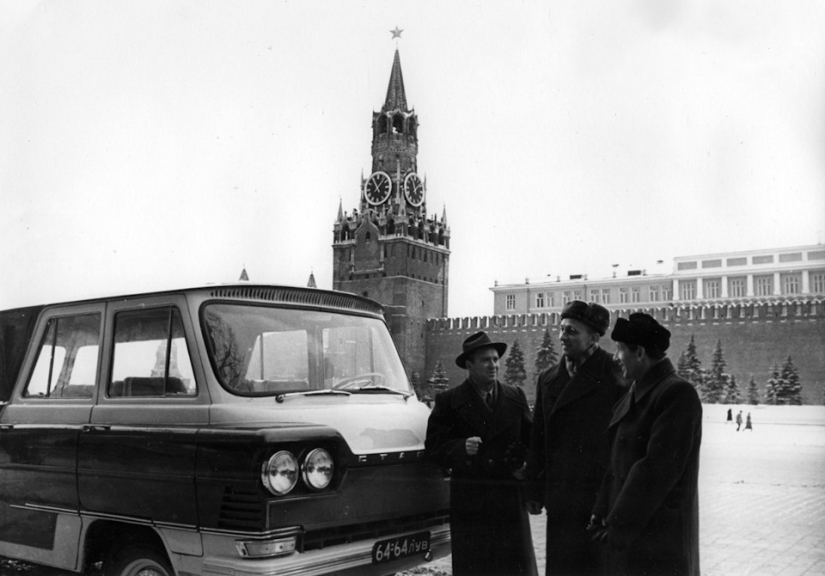
I came to Moscow and immediately conquered everyone!
"Start" was intended for the transportation of passengers on routes with low traffic, tourist family trips, excursions. It had good control and visibility for the driver. The fiberglass body was opposed to the metal one, since it did not succumb to corrosion. There were 10 seats in the cabin. The seats were made of foam and covered with artificial leather. During the All-Union development of chemistry, it was chic! In the cabin, a radio receiver and a "stove"were provided. The engine hood during stops easily turned into a table for playing chess. There was a trunk for storing passengers ' belongings. The driver also had a separate trunk.
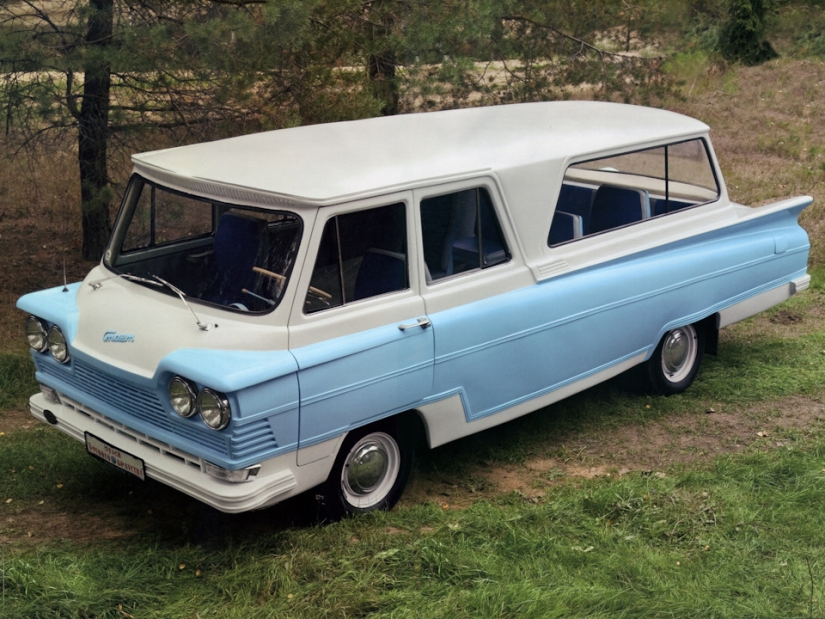
"Start" after a thorough restoration
At first, everything was going great: one of the first serial "Starts" with a standard interior layout was presented to the secretary of the Central Committee of the CPSU of Ukraine, Shelest, which provided the car with support at the national level. The "starts" were scattered all over Ukraine. One of them got to the Crimea, where the filming of the "Caucasian Captive" took place later. There it was used as a regular minibus.
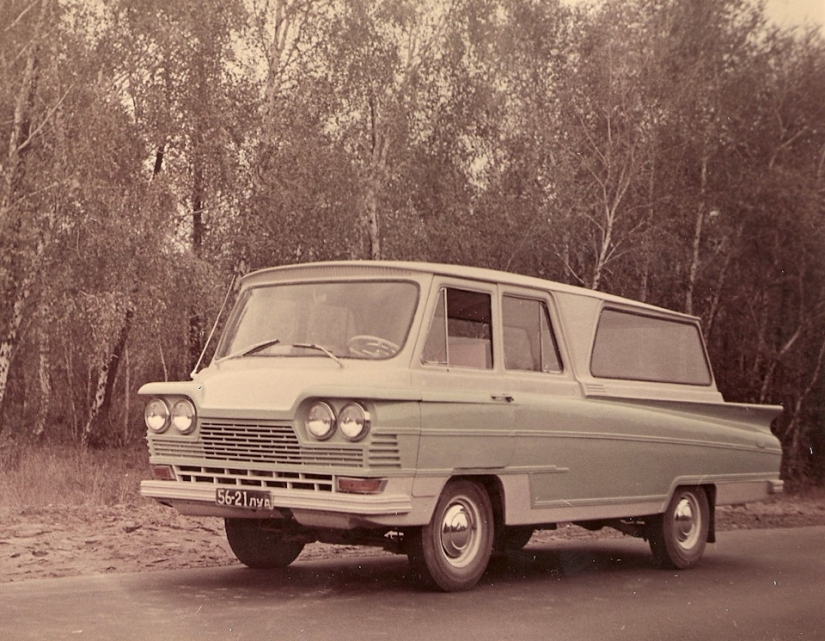
A test of mindfulness. Find the differences between this "Start"…
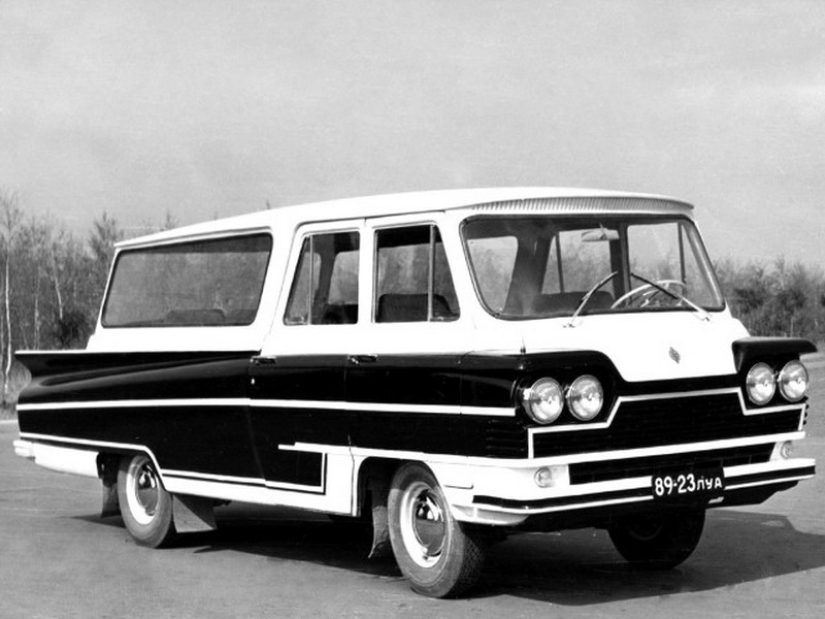
...and like this. At first glance, everything is the same, but if you look closely, you can notice a different design of the central roof pillar. All because this picture shows a car made in Lugansk at the LASZ plant
The minibus was later tried to be produced under the LASZ brand at the Lugansk Automobile Assembly Plant. Since the old equipment was not preserved, the Lugansk car was somewhat different from the Severodonetsk "Start": the middle body rack was not triangular in shape, but was thinly inclined. The suspension was redesigned — it used nodes from a heavier WINTER, as a result of which the movement became smoother. The inscription "Start" was not on the hood or on the radiator grille. Instead, the bus carried the emblem of the Lugansk Automobile Assembly Plant. In total, about 20 copies were released.
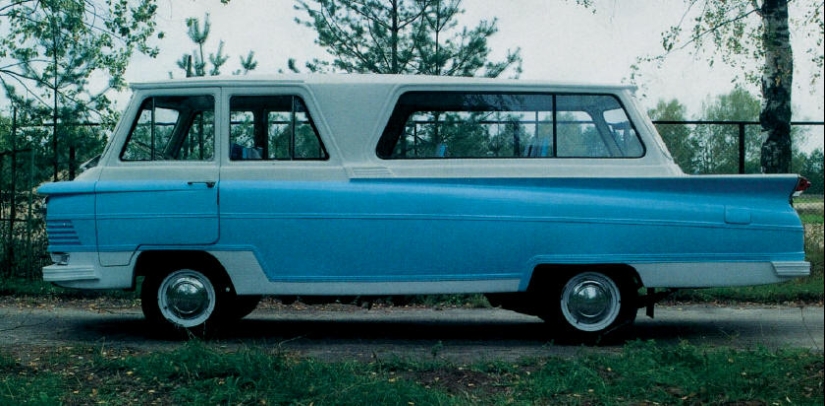
Unlike most minibuses, the "Start" had a protruding trunk of a sedan type
However, soon the gas car kits were used up, and the question arose about establishing mass production of the Start minibus. In the early autumn of 1965, two "Starts" with factory numbers 27 and 37 arrived at the bus testing laboratory at the department of passenger cars and buses of the NAMI avtopoligon.
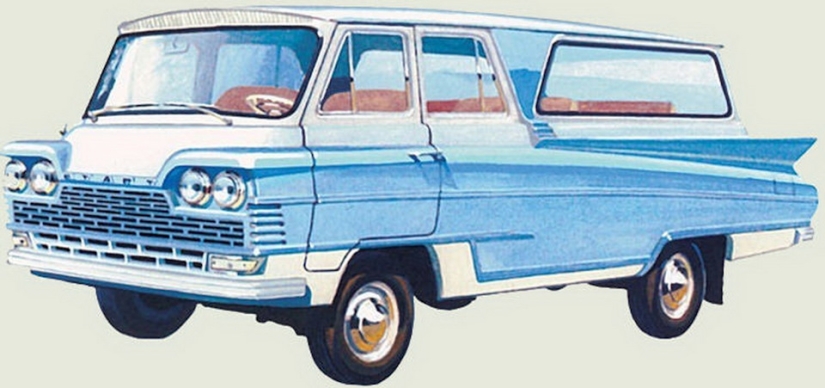
Drawing by Alexander Zakharov from Lev Shugurov's book "Cars of Russia"
The main operational disadvantage of the "Start" was the high fuel consumption — on average 10% higher than that of the RAF. And all because the fins created additional air resistance. In addition, the power elements of the frame and body were not strong enough: for example, the salon doors of the" Starts " almost fell off after operation as minibuses, and since the engine was located almost in the center of the cabin, access to it was difficult: it was extremely inconvenient to maintain and repair it.

The plastic body is not afraid of corrosion. A good option for restoration
In addition to the low operational profitability, the disadvantages could be attributed to the extremely high cost of production with a large share of manual labor. Because of this, the selling price of the "Start" was 9,500 rubles, while the most expensive modification of the GAZ-21 cost 8,500, and RAFIQ was sold to state-owned enterprises for 5,600 rubles.
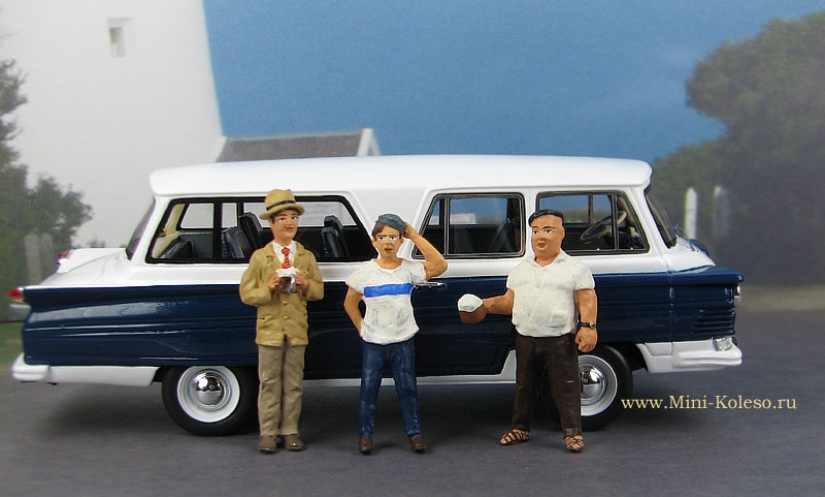
"Start" will forever remain in the memory of the people as a bus from the "Caucasian captive"
After the tests, the state did not find a reason to take the production of "Starts" under its care and plan to support it. It turned out that" Start " has become a beautiful, modern, but expensive and useless toy. But no one forbade the small-scale production of Severodonetsk. After the tests, the "Starts" were still assembled for a couple of years, and then production came to naught.
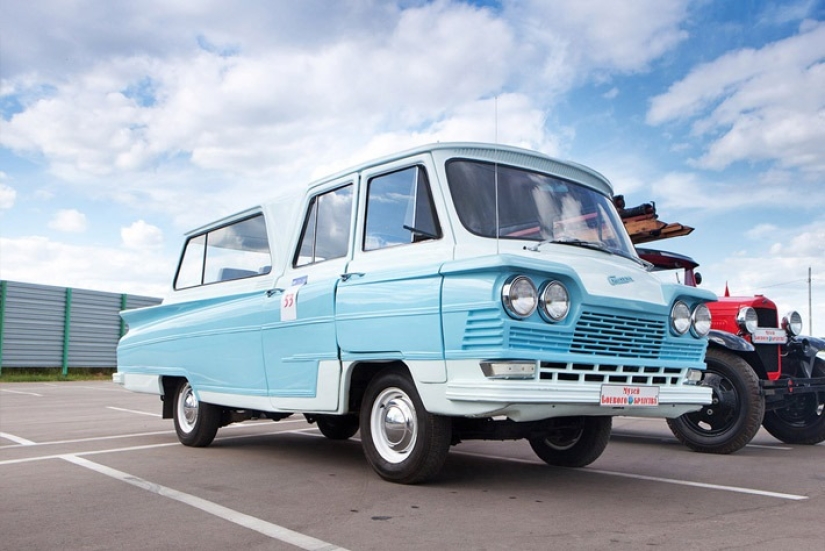
The restored "Start" can be seen at various exhibitions in Russia
In total, from 1964 to 1970, about 130 such minibuses were produced: in Severodonetsk (about 100 pieces), in Donetsk (no more than 10 pieces) and in Lugansk at the LASZ (about 20 pieces). To date, only a few surviving "Starts"are known.
Keywords: Auto | Bus | Design and architecture | Plastic | USSR | 60s
Post News ArticleRecent articles

We present you a selection of amazing beaches — but today these are not standard holiday destinations, but really unusual places. ...

Aerial photographer cronista johnny Miller demonstrate dramatically the gap between rich and poor in cities of South Africa, Mexico ...
Related articles

Contrary to popular belief, not all things made with your own hands have any value. And now you will see... In this collection we ...

When ordinary citizens stand up for their rights, even though they are opposed by governments and powerful corporations, it gives ...

In a cardboard box, everyone sees something different. Some use it as a storage container, for cats it is a great house, and ...

On April 22, 1923, Bettie Page was born in Nashville, who became a sex symbol throughout the country in the middle of the century. ...